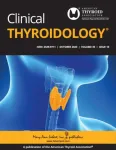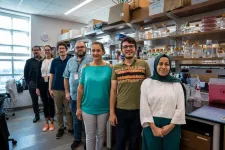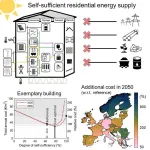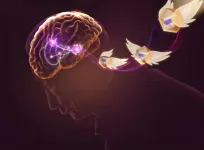(Press-News.org) NEW YORK, November 2, 2023 — Harnessing and controlling light is vital for the development of technology, including energy harvesting, computation, communications, and biomedical sensing. Yet, in real-world scenarios, complexity in light's behavior poses challenges for its efficient control. Physicist Andrea Alù likens the behavior of light in chaotic systems to the initial break shot in a game of billiards.
“In billiards, tiny variations in the way you launch the cue ball will lead to different patterns of the balls bouncing around the table,” said Alù, Einstein Professor of Physics at the CUNY Graduate Center, founding director of the Photonics Initiative at the CUNY Advanced Science Research Center and distinguished professor at CUNY. “Light rays operate in a similar way in a chaotic cavity. It becomes difficult to model to predict what will happen because you could run an experiment many times with similar settings, and you’ll get a different response every time.”
In a new study published in Nature Physics, a team led by researchers at the CUNY Graduate Center describe a new platform for controlling the chaotic behavior of light by tailoring its scattering patterns using light itself. The project was led by co-first authors Xuefeng Jiang, a former postdoctoral researcher in Alù’s lab who is now assistant professor of Physics with Seton Hall University, and Shixiong Yin, a graduate student in Alù’s lab.
Conventional platforms for studying light's behaviors typically use circular or regularly shaped resonant cavities in which light bounces and scatters in more predictable patterns. In a circular cavity, for example, only predictable and distinct frequencies (colors of light) survive, and each supported frequency is associated with a specific spatial pattern, or mode. One mode at a single frequency is sufficient to understand the physics at play in a circular cavity, but this approach does not unleash the full complexity of light behaviors seen in complex platforms, Jaing said.
“In a cavity that supports chaotic patterns of light, any single frequency injected into the cavity can excite thousands of light patterns, which is conventionally thought to doom the chances of controlling the optical response,” Jaing said. “We have demonstrated that it is possible to control this chaotic behavior.”
To address the challenge, the team designed a large stadium-shaped cavity with an open top and two channels on opposing sides that direct light into the cavity. As incoming light scatters off the walls and bounces around, a camera above records the amount of light escaping the stadium and its spatial patterns.
The device features knobs on its sides to manage the light intensity at the two inputs, and the delay between them. Opposing channels cause the light beams to interfere with each other in the stadium cavity, enabling the control of one beam's scattering by the other through a process known as coherent control—essentially, using light to control light, according to Alù. By adjusting the relative intensity and delay of the light beams entering the two channels, remarkably, researchers consistently altered the light's radiation pattern outside the cavity.
This control was enabled through a rare behavior of light in resonant cavities, called "reflectionless scattering modes" (RSMs), which had been theoretically predicted before but not observed in optical cavity systems. According to Yin, the ability to manipulate RSMs demonstrated in this work allows for the efficient excitation and control of complex optical systems, which has implications for energy storage, computing, and signal processing.
“We found at certain frequencies our system can support two independen, overlapping RSMs, which cause all of the light to enter the stadium cavity without reflections back to our channel ports, thus enabling its control,” said Yin. “Our demonstration deals with optical signals within the bandwidth of optical fibers that we use in our daily life, so this finding paves a new way for better storage, routing, and control of light signals in complex optical platforms.”
The researchers aim to incorporate additional knobs in future studies, offering more degrees of freedom to unravel further complexities in the behavior of light.
“Coherent Control of Chaotic Optical Microcavity with Reflectionless Scattering Modes,” by Xuefeng Jiang, Shixiong Yin, Huanan Li, Jiamin Quan, Heedong Goh, Michele Cotrufo, Julius Kullig, Jan Wiersig, and Andrea Alù.
About the Graduate Center of The City University of New York
The CUNY Graduate Center is a leader in public graduate education devoted to enhancing the public good through pioneering research, serious learning, and reasoned debate. The Graduate Center offers ambitious students nearly 50 doctoral and master’s programs of the highest caliber, taught by top faculty from throughout CUNY — the nation’s largest urban public university. Through its nearly 40 centers, institutes, initiatives, and the Advanced Science Research Center, the Graduate Center influences public policy and discourse and shapes innovation. The Graduate Center’s extensive public programs make it a home for culture and conversation.
About the Advanced Science Research Center at the CUNY Graduate Center
The Advanced Science Research Center at the CUNY Graduate Center (CUNY ASRC) is a world-leading center of scientific excellence that elevates STEM inquiry and education at CUNY and beyond. The CUNY ASRC’s research initiatives span five distinctive, but broadly interconnected disciplines: nanoscience, photonics, neuroscience, structural biology, and environmental sciences. The center promotes a collaborative, interdisciplinary research culture where renowned and emerging scientists advance their discoveries using state-of-the-art equipment and cutting-edge core facilities.
END
Bartering light for light: scientists discover new system to control the chaotic behavior of light
Studying how light beams interfere with each other in a stadium shaped arena gives researchers insight on its complex behavior
2023-11-02
ELSE PRESS RELEASES FROM THIS DATE:
Study links changes in global water cycle to higher temperatures
2023-11-02
It’s a multi-billion dollar question: What will happen to water as temperatures continue to rise? There will be winners and losers with any change that redistributes where, when and how much water is available for humans to drink and use.
To find answers and make informed predictions, scientists look to the past. Reconstructions of past climate change using geologic data have helped to show the far-reaching influence of human activity on temperatures since the Industrial Age. But assembling hydroclimate records for the same timeframe has proved to be much harder.
A study from the Past Global Changes (PAGES) Iso2k project team, ...
Metabolite tells cells whether to repair DNA
2023-11-02
Metabolites called nucleotides are the building blocks of DNA and can impact cancer’s sensitivity or resistance to chemotherapy and radiation in brain cancer.
Findings from researchers at the University of Michigan Health Rogel Cancer Center, published in Cancer Discovery, show how a specific nucleotide metabolite, called GTP, controls responses to radiation and chemotherapy in an unexpected way.
“We learned that if you increase a cell’s GTP levels, it makes it really resistant to ...
American Thyroid Association® names Trevor E. Angell, MD new Editor-in-Chief of Clinical Thyroidology®
2023-11-02
The American Thyroid Association® (ATA®) is pleased to announce that Trevor E. Angell, MD has been selected as the new Editor-in-Chief of the ATA monthly journal Clinical Thyroidology®. Dr. Angell’s term as Editor-in-Chief will begin in January 2024.
Clinical Thyroidology is one of the ATA’s official journals and is published in partnership with Mary Ann Liebert, Inc. This highly valued abstract and commentary publication provides a comprehensive look at clinical thyroid literature. Experts ...
Hollings researchers uncover new targets for breast cancers resistant to standard therapies
2023-11-02
Researchers at MUSC Hollings Cancer Center believe that some drugs already approved by the U.S. Food and Drug Administration or currently in clinical trials could be repurposed for certain breast cancer patients whose cancer has become resistant to standard therapies.
Ozgur Sahin, Ph.D., a professor and SmartState Endowed Chair in the Department of Biochemistry and Molecular Biology, led the research, which was published Nov. 2 in Nature Communications.
The research, funded by an American Cancer Society Research Scholar Grant, started as an investigation into cancer resistance to the drug tamoxifen but expanded as the research questions led down new ...
Start-up dedicated to developing new antibiotics
2023-11-02
It all began with basic research: While conducting laboratory experiments, a team at the Technical University of Munich (TUM) came across an active agent against multidrug-resistant bacteria with a fundamental difference to antibiotics developed to date. The researchers have since established a start-up to develop a new drug based on this agent. The entrepreneurs have now been nominated for Science Breakthrough of the Year in the Science Start-Up category at the international Falling Walls summit.
Rising numbers of bacteria are developing ...
Two million European households could abandon the electrical grid by 2050
2023-11-02
Researchers report that 53% of European freestanding homes could have supplied all their own energy needs in 2020 using only local rooftop solar radiation, and this technical feasibility could increase to 75% in 2050. Publishing November 2 in the journal Joule, the study shows that there is no economic advantage for individual households to be fully self-sufficient under current or future conditions, though in some cases the costs are on par with remaining on-grid. The researchers estimate that self-sufficiency will be economically feasible for 5% (two million) of Europe’s 41 million freestanding single-family homes in 2050, ...
One sleepless night can rapidly reverse depression for several days
2023-11-02
All-nighters can cause giddy and slap-happy feelings
This effect is caused by increased dopamine release in distributed brain regions
This dopamine signal also enhances plasticity in the neuronal connections, causing a potent antidepressant effect that lasts for days
Study suggests that prefrontal cortex and its dopamine inputs are key for rapid plasticity and antidepressant effects after brief sleep loss
EVANSTON, Ill. — Most people who have pulled an all-nighter are all too familiar with that “tired and wired” ...
Circuit-specific gene therapy brings new hope for treatment of Parkinson’s disease
2023-11-02
Researchers from the Shenzhen Institute of Advanced Technology (SIAT) of the Chinese Academy of Sciences (CAS) and their collaborators have developed a gene therapy strategy to selectively manipulate Parkinson's disease-affected circuitry and attenuate the core motor symptoms of Parkinson's disease in rodent and nonhuman primate animals.
The study was published in Cell on Nov. 2.
Parkinson's disease, characterized by the loss of midbrain dopaminergic neurons, is one of the most common neurodegenerative diseases in the elderly population, affecting more than 6 million people worldwide.
Dopamine ...
Higher risk of breast cancer in women with false positive mammography result
2023-11-02
Women who receive a false positive mammography result are more likely to develop breast cancer over the subsequent 20 years, report researchers from Karolinska Institutet in a study published in JAMA Oncology. The risk is highest for women aged between 60 and 75 and who have low breast density.
In global terms, breast cancer is the most common form of cancer among women, and screening is an important tool for catching women with a tumour at the earliest possible stage. In Sweden, all women between ...
PTSD symptoms and cardiovascular and brain health in women
2023-11-02
About The Study: In this study of 274 midlife women, greater posttraumatic stress disorder (PTSD) symptoms were associated with higher carotid atherosclerosis and, among women who were APOEɛ4 carriers, greater brain small vessel disease and poorer cognitive performance. These findings point to the adverse implications of PTSD symptoms for cardiovascular and neurocognitive health among women in midlife, particularly for women who are APOEɛ4 carriers.
Authors: Rebecca C. Thurston, Ph.D., of the University of Pittsburgh, is the corresponding author.
To access the embargoed ...
LAST 30 PRESS RELEASES:
First Editorial of 2026: Resisting AI slop
Joint ground- and space-based observations reveal Saturn-mass rogue planet
Inheritable genetic variant offers protection against blood cancer risk and progression
Pigs settled Pacific islands alongside early human voyagers
A Coral reef’s daily pulse reshapes microbes in surrounding waters
EAST Tokamak experiments exceed plasma density limit, offering new approach to fusion ignition
Groundbreaking discovery reveals Africa’s oldest cremation pyre and complex ritual practices
First breathing ‘lung-on-chip’ developed using genetically identical cells
How people moved pigs across the Pacific
Interaction of climate change and human activity and its impact on plant diversity in Qinghai-Tibet plateau
From addressing uncertainty to national strategy: an interpretation of Professor Lim Siong Guan’s views
Clinical trials on AI language model use in digestive healthcare
Scientists improve robotic visual–inertial trajectory localization accuracy using cross-modal interaction and selection techniques
Correlation between cancer cachexia and immune-related adverse events in HCC
Human adipose tissue: a new source for functional organoids
Metro lines double as freight highways during off-peak hours, Beijing study shows
Biomedical functions and applications of nanomaterials in tumor diagnosis and treatment: perspectives from ophthalmic oncology
3D imaging unveils how passivation improves perovskite solar cell performance
Enriching framework Al sites in 8-membered rings of Cu-SSZ-39 zeolite to enhance low-temperature ammonia selective catalytic reduction performance
AI-powered RNA drug development: a new frontier in therapeutics
Decoupling the HOR enhancement on PtRu: Dynamically matching interfacial water to reaction coordinates
Sulfur isn’t poisonous when it synergistically acts with phosphine in olefins hydroformylation
URI researchers uncover molecular mechanisms behind speciation in corals
Chitin based carbon aerogel offers a cleaner way to store thermal energy
Tracing hidden sources of nitrate pollution in rapidly changing rural urban landscapes
Viruses on plastic pollution may quietly accelerate the spread of antibiotic resistance
Three UH Rainbow Babies & Children’s faculty elected to prestigious American Pediatric Society
Tunnel resilience models unveiled to aid post-earthquake recovery
Satellite communication systems: the future of 5G/6G connectivity
Space computing power networks: a new frontier for satellite technologies
[Press-News.org] Bartering light for light: scientists discover new system to control the chaotic behavior of lightStudying how light beams interfere with each other in a stadium shaped arena gives researchers insight on its complex behavior





